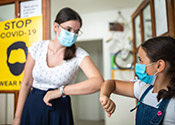
This blog post describes 10 of the most important steps schools and districts can take to address challenges related to COVID in 2022–23. Topics include mitigation strategies, social and emotional challenges, academic recovery, and the role schools can play in disseminating health information.
- Tools & School Guidance

Households can now order up to four free at-home rapid antigen COVID tests through a partnership between the U.S. Department of Health and Human Services and the U.S. Postal Service that has been renewed for winter 2022–23. The COVID.gov testing website also contains information on how to access at-home tests at retailers and pharmacies and how to obtain insurance reimbursement for those tests.
- News
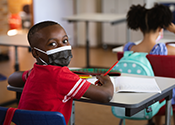
According to a study of COVID incidence in Boston-area schools before and after a statewide mask mandate was lifted, schools that maintained masking post-mandate had significantly lower rates of COVID, leading students and staff to miss fewer school days. The study’s findings underscore the value of continuing masking policies even when mandates are rescinded.
- Research
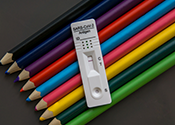
This study of “test-to-stay” policies in universally masked k–12 settings found that such policies resulted in 82% of school days saved, greatly reducing the number of missed school days.
- Research

This Q&A with physician and public health expert Dr. Leana Wen describes the implications of the “tripledemic” of COVID alongside respiratory syncytial virus (RSV) and influenza, particularly in pediatric populations. The article explains that many pediatric hospitals are strained from the combination of cases they are treating and discusses common-sense preventative measures like good ventilation, hand hygiene, masking, and testing.
- News

This California Department of Public Health memo provides up-to-date guidance to California’s schools on mitigating COVID-19 while learning in person. It describes mitigation strategies, as well as considerations for student mental and behavioral health, students with disabilities and other health needs, higher-risk activities, large events, visitors to schools, and boarding schools.
- Tools & School Guidance

This study of seven California school districts identifies several themes and practices that aided their pandemic response. As the pandemic wore on, districts’ initial efforts expanded to address student and staff mental health, student engagement in online learning, adjustments of grading and graduation policies, and targeted services for students with high needs. Districts described proactive and consistent communication, efforts to build close ties with their local communities, and relationships within the district office and with County Offices of Education as among those that were particularly helpful.
- Research
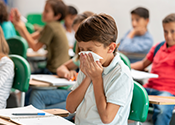
This study, conducted in Italy, found that students accounted for a high proportion of “infected individuals who caused onward transmission,” suggesting that efforts to control the spread of COVID should target school settings.
- Research
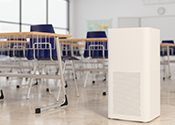
This piece from The Conversation lays out the evidence base for improving ventilation systems in schools and explains how this can help prevent COVID as well as other pediatric health conditions.
- Tools & School Guidance
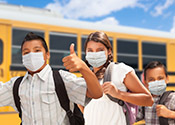
This California Department of Public Health publication lays out steps that event operators can take to protect attendees from COVID transmission during large events. Specific guidance for k–12 school events, such as assemblies and dances, includes splitting events by cohort (e.g., grade level) when possible, hosting events outdoors (and, in particular, serving any food and beverages outdoors), and considering a pre-event testing requirement for attendees.
- Tools & School Guidance
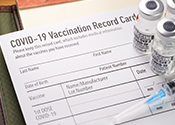
Through this website, schools districts can apply to the California K-12 School Rapid Antigen Testing Program, which provides free testing supplies, training, and software to schools to support COVID-19 testing.
- Tools & School Guidance
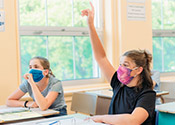
This article describes a nationwide tendency in k–12 schools toward using low-cost ventilation measures to reduce the spread of COVID-19, like opening doors and windows and holding classes outside. Less than half of districts in a nationwide survey indicated they have engaged or continue to engage in higher-cost, higher-quality efforts to improve indoor air filtration, like upgrading school HVAC systems (38.5%) and/or using portable High Efficiency Particulate Air filtration systems in classrooms (28.5%). The article provides a list of funding streams available for districts that wish to upgrade their indoor air filtration.
- Research

California encourages parents to test their children for COVID-19 as they return to school from break and to share the test results with their local health department. This website contains resources for parents, including a fact sheet with steps they should follow to conduct at-home COVID-19 testing as well as social media images and messages in English and Spanish for districts and schools to share.
- Tools & School Guidance